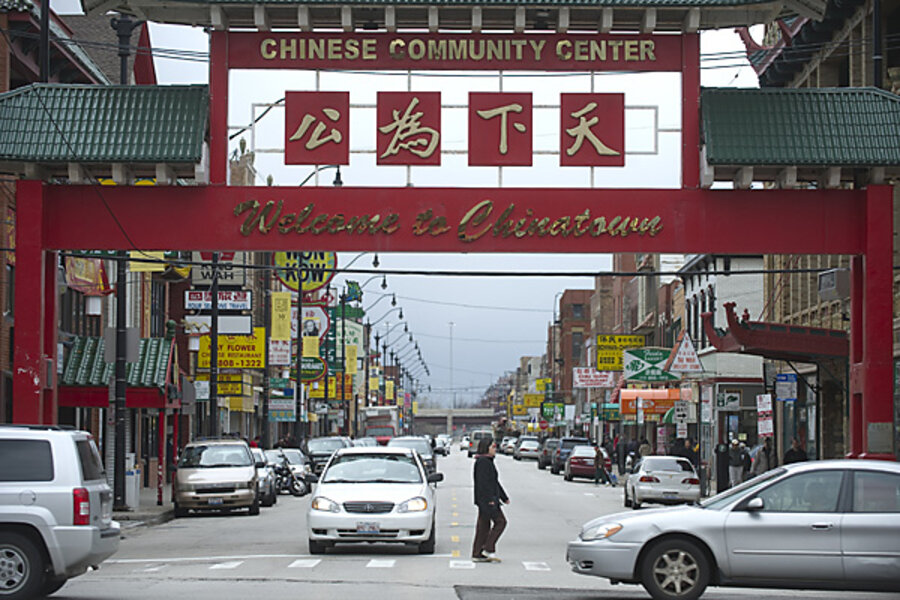Who lives in better neighborhood: rich blacks or working-class whites?
Black and Hispanic Americans are more likely to live in neighborhoods with fewer important resources, like good schools, parks, and clean air, than whites are. And the difference in neighborhood quality can’t be explained by differences in household income, says a new analysis of 2010 census data from all US metropolitan regions.
In fact, the average white household that earns less than $40,000 is in a more affluent, resource-rich neighborhood than a black or Hispanic household that earns more than $75,000, says the report by John Logan, a sociology professor at Brown University in Providence, R.I. “Minorities at every income level live in poorer neighborhoods than do whites with comparable incomes,” with one exception – affluent Asians.
“The findings were not surprising to me,” says Margery Turner, vice president for research at the Urban Institute, a social and economic research group in Washington. What the study does is to comprehensively link racial and ethnic living patterns with income data. “I haven’t seen anything that pulls all of those components of the story this completely, with the most recent available data,” she adds.
Whites have remained the most isolated group since 1990, which is at least partly because they make up the majority of the population in metropolitan America. For instance, the most current data from 2005 to 2009 shows that the average white household is in a neighborhood where 75 percent of the households are white, which is down from 83 percent 20 years before. Both Hispanics and blacks live, on average, in neighborhoods where about 40 percent of households are from their same racial or ethnic group. In 1990, those numbers were 47 percent for blacks and 37 percent for Hispanics.
Among affluent households making at least $75,000, Asians have the least exposure to poverty, and blacks have the highest. On average, affluent Asians live in neighborhoods that are 8.7 percent poor, affluent whites live in neighborhoods that are 8.9 percent poor, affluent Hispanics live in neighborhoods that are 13 percent poor, and affluent blacks live in neighborhoods that are 13.9 percent poor.
Exposure to poverty means more unemployment, worse schools, more health problems, and higher crime rates, says Mr. Logan, the study’s author. “It’s pretty bleak.... There are tremendous disparities.”
Housing discrimination still plays a role, Ms. Turner says, so fair housing laws should continue to be a priority. But another way to ease housing segregation and inequality is to create better sources of information for people who are looking for housing.
“We don’t understand as well as we should exactly how is it that people search for housing,” Turner says. “If we understood it, then maybe we could hone our strategies for helping people overcome old patterns of segregation.”
Not everyone agrees.
“When you go to a city like Chicago, you will see Greektown, Chinatown, areas where Poles, Mexicans, and you name it, live together,” says Roger Pilon, vice president for legal affairs at the Cato Institute, a libertarian think tank in Washington. “Because sometimes, in fact oftentimes, customs, language, notions of prior national identity are what influence the decisions of people to live where they do.”
“Basically people live where they feel most comfortable living, and that involves more than money,” Mr. Pilon says.
Still, Turner says that the disparities between neighborhoods that come with racial and ethnic segregation are harmful to the US economy.
“They really undermine our future prosperity as we become a majority-minority country,” Turner says.





